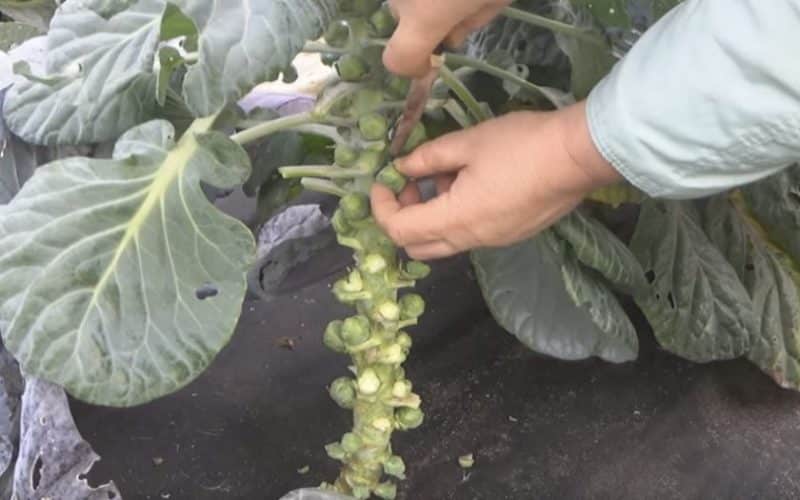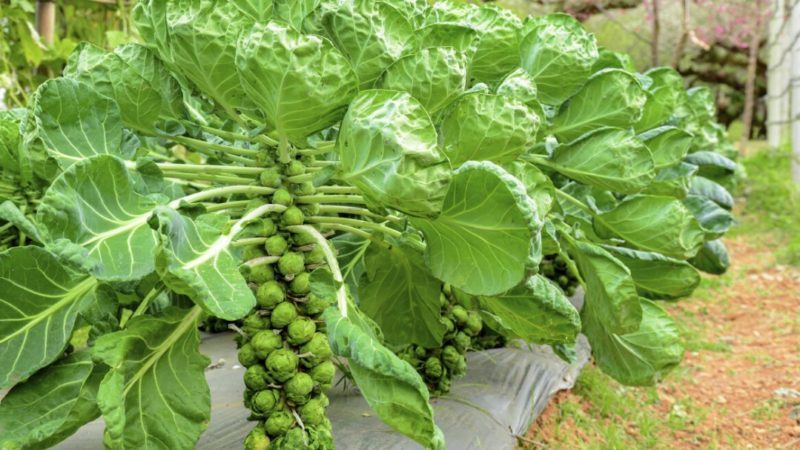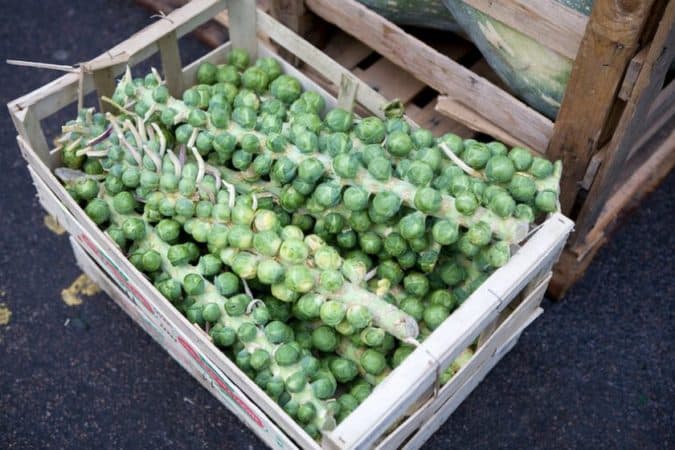When and how to harvest Brussels sprouts
The process of growing and harvesting Brussels sprouts is not as simple as it seems at first glance. Its ripening period does not coincide with ordinary white, red or cauliflower cabbage. It is not always possible to understand when the forks are already ripe. In this article we will tell you when to remove Brussels sprouts from the garden in the fall.
When to Harvest Brussels Sprouts in the Fall

Early and mid-season varieties ripen in about 100 days, and in the middle of the season they can already be harvested. These include:
- Long Island;
- Franklin;
- Oliver;
- Dolmik.
Late varieties, unlike early ones, ripen later, but at the same time remain fresh longer during winter storage. This crop is harvested in late autumn or early winter, after frost.
You can’t overcook the heads of cabbage, otherwise they will freeze, and if you hurry, the cabbage will begin to wither ahead of schedule.
The most popular late varieties:
- Hercules;
- Sapphire;
- Curl.
In the south - in the Krasnodar Territory, Crimea, and the Caucasus - the fastest ripening; in the central part of the country the harvest will be ready a little later, but still faster than in the Far East and Siberia. It is also worth considering the weather during the summer season: a cold and rainy summer will prevent early ripening.
It is also important to take into account the time of planting - this is the beginning of the countdown by which the ripeness of cabbage is judged. From the end of April - beginning of May, 5 months must pass until the crop ripens. If young plants were transplanted only in June, the period increases by another 1-1.5 months.
To determine when it's time to cut the heads of cabbage, do a quick maturity test. Press together with your thumb and forefinger – it should be tight. Then listen - a slight creak should appear when pressed.
When ripe, it is the size of a walnut; the bottom 3 leaves should turn yellow or brown. It is better to tear off all dried and damaged leaves immediately. They are concentrated in the lower part of the plant. The ripe lower heads can already be cut off, because they take up nutrients and do not release them to the top of the bush, which is why the upper ones will ripen more slowly.
Important! Brussels sprouts ripen from the bottom up the bush, so cutting can be done in stages.
To understand when to harvest Brussels sprouts, pay attention to the following factors:
- Yellowing of 2-5 lower leaves that need to be removed.
- The lower heads of cabbage ripen and increase in diameter to 4-5 cm.
- Cutting off the bottom ripe vegetables and then yellowing the next 3-5 leaves after 1-2 weeks. Further gradual ripening of heads of cabbage from bottom to top.
Don't be afraid to wait it out: Brussels sprouts It is not afraid of frost and ripens at low temperatures.
Harvesting Brussels sprouts

They begin harvesting from the bottom up as they ripen. So, you can cut about 15 heads of cabbage at a time, and after 1-2 weeks - another 10-15 pieces. and so on until the bush is completely ripe to the top. If cabbage is properly processed and pinched in time, a harvest from 2-4 plants will be enough for one standard family.
Weather conditions do not affect harvesting in any way; The main thing is to keep it clean and not forget about the already cut wet heads of cabbage. If they are in a bag or tightly closed container, they will smear or rot.
If there were frosts at night, it is better to postpone the harvest to the evening so that the taste is close to natural and the vegetable recovers from the low temperature.
Both with high humidity and after frost, it is better to let the bushes dry out so that the harvest can then be better stored. You don’t need any special equipment for harvesting Brussels sprouts: arm yourself with a clean and sharp short knife and a container for the cut heads.
If frosts hit ahead of schedule, you can save immature plants and give them the opportunity to bear fruit in a warmer place. To do this, you need to dig up the entire bush with its root system and bury it in a greenhouse or greenhouse.
Important! Cabbage heads ripen from bottom to top and unevenly, 10-15 pieces each. in Week. It will not be possible to collect the entire harvest at once. It is better to choose a dry and warm day for cutting forks.
If you want to keep the harvest fresh for as long as possible, the vegetables are cut along with the shoots, which will provide food for the heads of cabbage for some time.
Immediately after harvesting, cabbage is eaten or processed for longer storage. Rooms with average humidity and a temperature range of +2...+5°C are suitable for this, for example, balconies, basements and loggias.
How to speed up maturation

Plant cabbage at the end of April - beginning of May so that it is ready by September. If you live in the northern regions, make a frost shelter using improvised materials. Fertilize the soil with organic matter or minerals based on calcium and phosphorus.
Compost and wood ash are suitable organic fertilizers. Be careful with droppings, as they can injure delicate and fragile roots. It is better to fertilize the soil in the fall, immediately after harvesting.Then, over the winter and spring, all the necessary microelements will dissolve, and there will be more nutrients in the soil.
Use the pinching method. To do this, remove the top growing point on the stem to prevent the appearance of side shoots on which small heads of cabbage will grow. They will not allow other forks to develop on the main shoot. This measure will also increase productivity.
Attention! Pinching is carried out a month before the end of the growing season (in mid-summer, when cabbage is actively growing).
The developed plant must meet the following criteria:
- The bush reached a height of 70-110 cm.
- On the lower part of the stem, the heads of cabbage are well formed.
- In the axil of each leaf, 1 loose small head has formed.
Pinching is done with a clean and sharp knife, and the cut site is treated with wood ash to avoid infection and the entry of infectious agents.
How to store it correctly

Fresh storage without the use of any special means cannot exceed 10 days. To do this, place dry, clean cabbage in a perforated plastic bag and put it in the refrigerator.
Much longer (up to two months) the heads of cabbage will lie in the basement or on the balcony in dry sand.
The most durable way is freezing. To do this, you need to rinse and dry the heads and put them in a zip bag or other sealed plastic bag so that foreign odors do not affect the taste.
This is interesting:
The best recipes for pickling Brussels sprouts for the winter
Conclusion
The Brussels sprouts harvest ripens on average in 5 months, but climate, variety and time of planting seeds can adjust the final figure. The forks are cut with a sharp and clean knife and the cabbage is gradually collected from top to bottom along the bush as soon as the lower heads of cabbage are ready.
Store vegetables in the refrigerator for 2 weeks or on the balcony (in the basement) for up to 2 months.